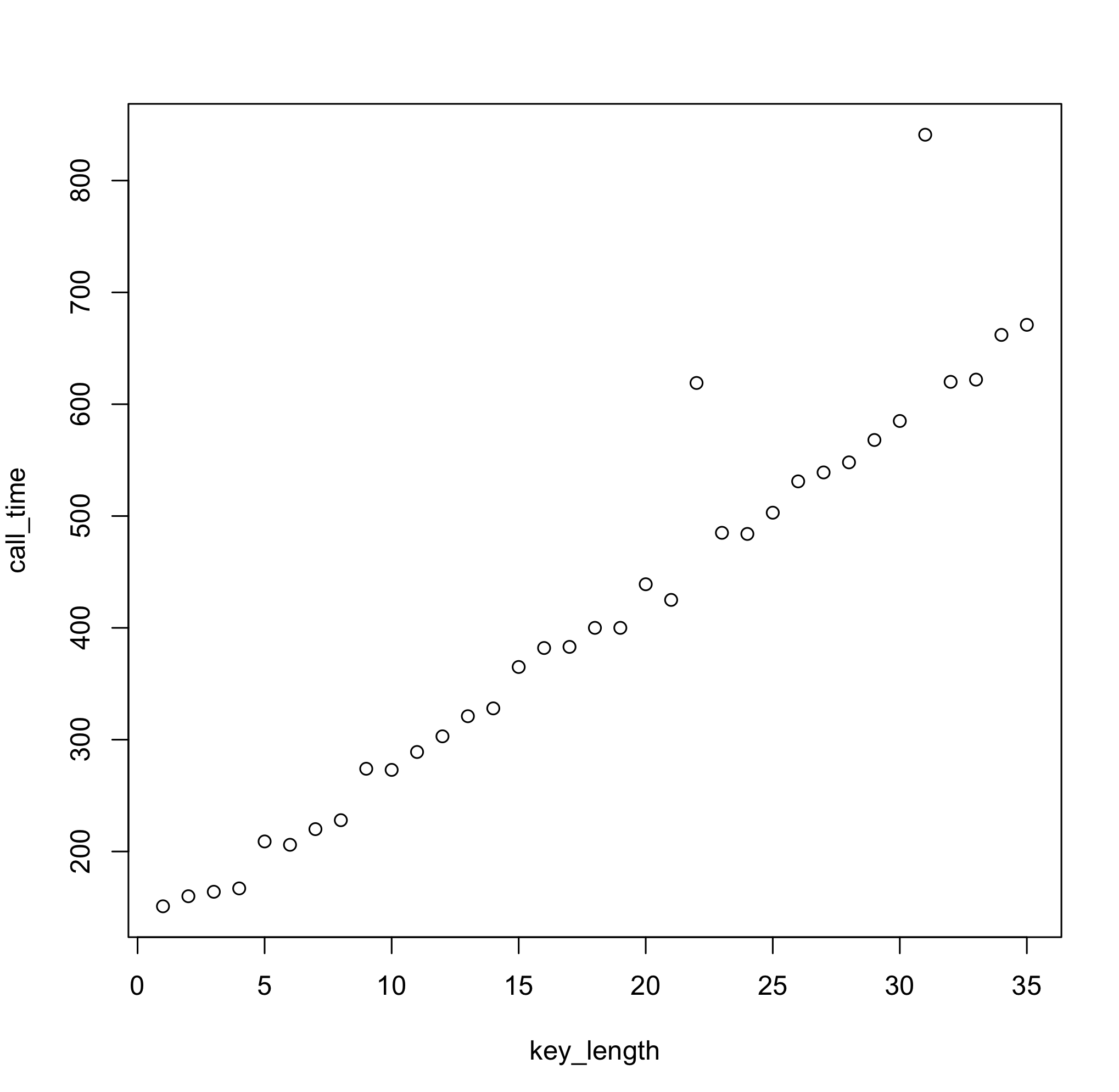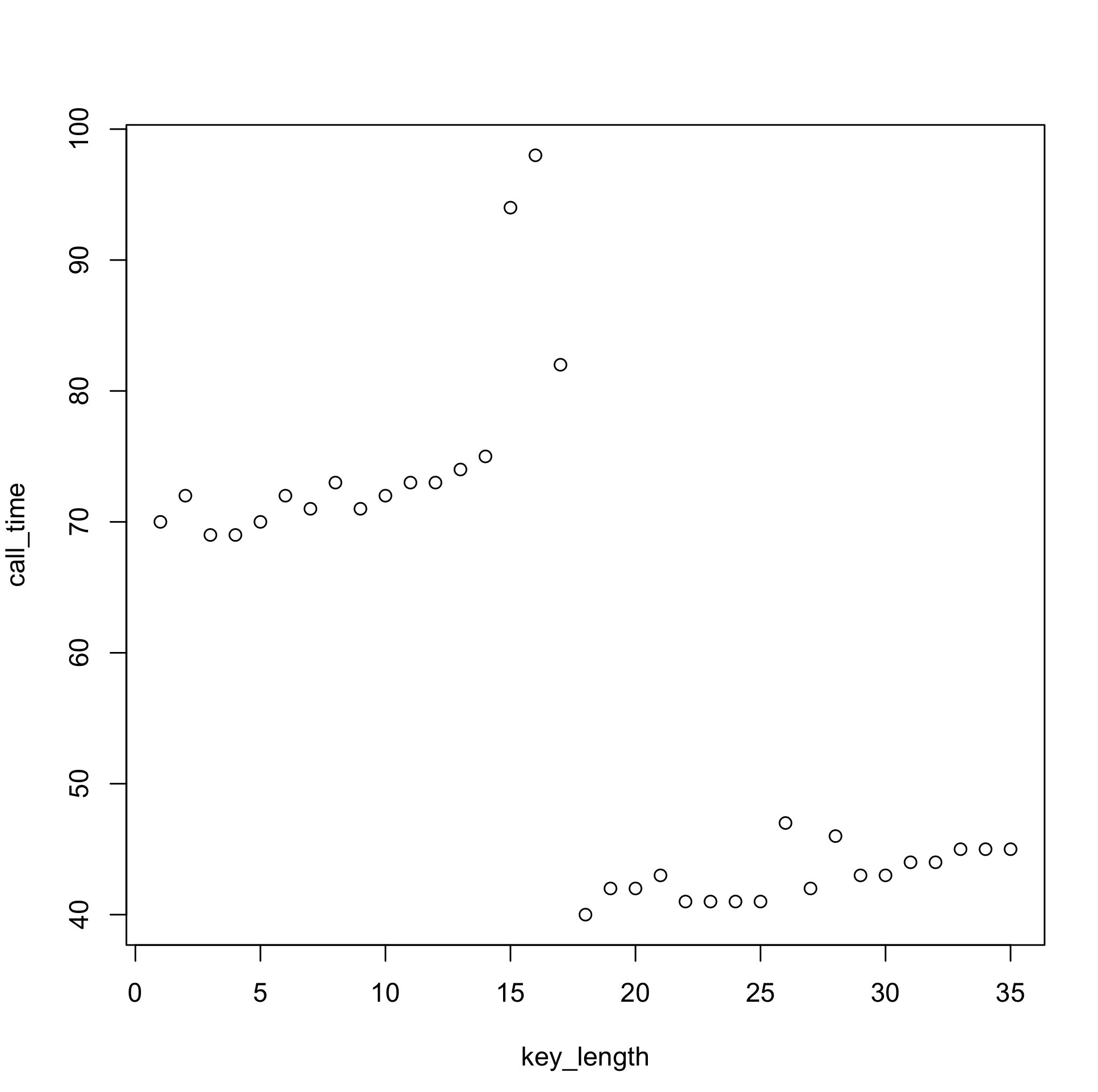I was reading Colin O'Flynn's excellent "Forget Not the Humble Timing Attack" article in PoC | GTFO this morning, and I thought I should check how easy timing attacks would be in Java (I know, I know...).
Anyway, turns out the System.nanoTime() is quite handy. Here's the sample demo that uses it to measure method invocation times for different key sizes:
import java.util.UUID;
import java.util.Arrays;
public class TimingPoC {
private static char[] secret = UUID.randomUUID().toString().toCharArray();
/** leaky password check **/
public boolean checkSecret(char[] pwd) {
for (int i=0; i<pwd.length; i++) {
if (pwd[i] != secret[i]) {
return false;
}
}
return true;
}
public void start() {
for (int i=1; i<secret.length; i++) {
char[] candidate = Arrays.copyOfRange(secret, 0, i);
long[] times = new long[5];
for (int it=0; it<times.length; it++) {
long start = System.nanoTime();
checkSecret(candidate);
times[it] = (System.nanoTime() - start);
}
Arrays.sort(times);
System.out.println(i + "\t" + times[(int)Math.floor(times.length/2)]);
}
}
}
And here are the corresponding (nanosecond) response times:

One simple linear regression later...
Call:
lm(formula = call_time ~ key_length)
Residuals:
Min 1Q Median 3Q Max
-37.185 -21.977 -10.429 -1.134 214.983
Coefficients:
Estimate Std. Error t value Pr(>|t|)
(Intercept) 111.9210 16.7010 6.701 1.24e-07 ***
key_length 16.5838 0.8092 20.495 < 2e-16 ***
---
Signif. codes: 0 ‘***’ 0.001 ‘**’ 0.01 ‘*’ 0.05 ‘.’ 0.1 ‘ ’ 1
Residual standard error: 48.35 on 33 degrees of freedom
Multiple R-squared: 0.9272, Adjusted R-squared: 0.925
F-statistic: 420 on 1 and 33 DF, p-value: < 2.2e-16
We can easily conclude that every extra character in the key length increases the method response time by 16.5 nanoseconds, which is the information that given naive password check information leaks. Now, all we need to do is keep increasing test key length until response times stop growing, and we'll have our target key size.
One thing to keep in mind with the approach above is that, on a modern OS, given times will not be deterministic. So repeated measurements are needed in order to get a "smoothed" value (in the code above value used is the median of 5 measurements). That said, though, in purely statistical terms, even more measurements would yield a more stable estimate, in this particular case, it's not necessarily true. Here's an example of a median based on 5000 samples:

Why do you think this is the case? :)
 Aleksandar Bradic
Aleksandar Bradic
Discussions
Become a Hackaday.io Member
Create an account to leave a comment. Already have an account? Log In.